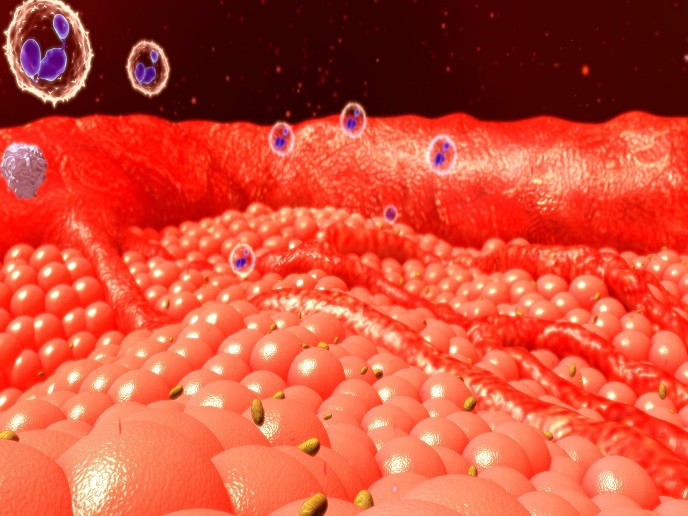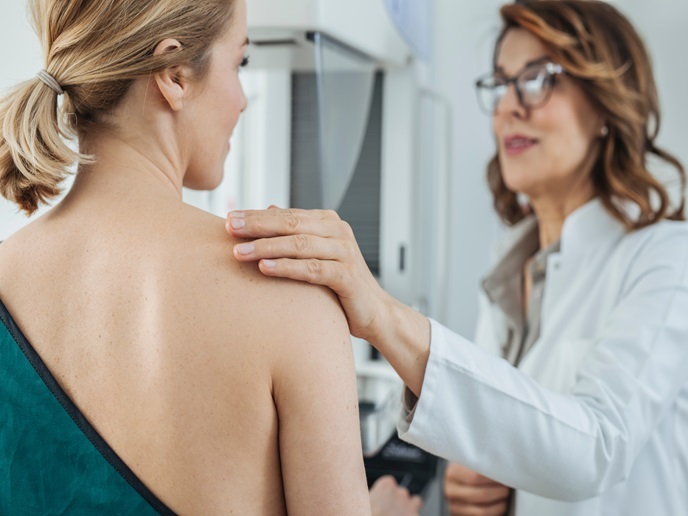Blood test based on precise DNA matching detects colorectal cancer
The revolutionary DGL© test from DestiNA Genomics Ltd detects the common mutations present in colorectal tumours in a simple blood test. Making this even more powerful via data evaluation is a novel, high-resolution acoustic wave microsensor from Advanced Wave Sensors that delivers an accurate, inexpensive, label-free, direct and real-time reading. Dr Román Fernandez, technical coordinator of the project(opens in new window), describes the elements of the test. “A disposable test cartridge houses 24 high-frequency microresonators and works as an electromechanical, thermal interface between the sensors and the characterisation system. Sample delivery over the surface of the microsensor array means lower volume with correspondingly lower assay cost of only EUR 50 per sample.” Ramping up the number of molecules carrying mutations, a so-called pre-amplification, is followed by an acoustic detection assay using proteins to identify the presence of DNA deviations to point mutation level. A transduction method with a large sensitivity is necessary to detect the target molecules at very low concentration ranges (zM). System validation A specially trained team operated the prototype and evaluated the Liqbiopsens system. The mutations used in the test runs were optimised and tests on the platform were carried out in a real operation environment. The Liqbiopsens platform was installed in July 2018 at the Genyo Institute in Granada. The end-user partner, Andalusian Health Service, has carried out several experimental campaigns to validate the technology. “Very valuable information has been gathered to improve the performance and usability of the system. Currently, the consortium is actively involved in the creation of a joint venture company to further evaluate the Liqbiopsens system,” points out Dr Fernandez. Tackling the unexpected Several unexpected challenges not envisaged in the initial proposal reared their heads during the project. “Most of them were related to the development of the disposable test cartridge and with the assay protocol definition to adapt DGL© reaction to the acoustic wave transduction method,” explains Dr Fernandez. The consortium worked hard to detect and deal with any possible new threats to the project, introducing alternative strategies as soon as possible. The risk monitoring plan was updated periodically to include new challenges and to design possible workarounds. “Furthermore, mitigation measures were designed for all project-critical milestones. From the very beginning of the project, we had clear in mind that a plan B was necessary in case a technical issue arise,” he points out. Commercialisation plans reflect user experience The exploitation committee developed a Liqbiopsens exploitation strategy at successive meetings held during project development. “A joint venture has been considered the best solution for the commercialisation of the results of the project in the liquid biopsy market,” Dr Fernandez explains. A company business plan, an actual project deliverable, defines how and where to move forward with the Liqbiopsens joint venture. First steps to be followed now include searching for public/private funding to further develop/validate the platform, contacting pharma industries to show the technology and looking for possible new partners. Dr Fernandez emphasises: “Project workflow was continuously guided by an effective innovation-guided strategy, necessary to detect, prioritise and select the new features that should be included in the Liqbiopsens product to assure commercial success.” Important conclusions about user experience, bugs, improvements and appearance of the commercial device have all been integrated into the final product.







